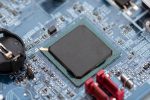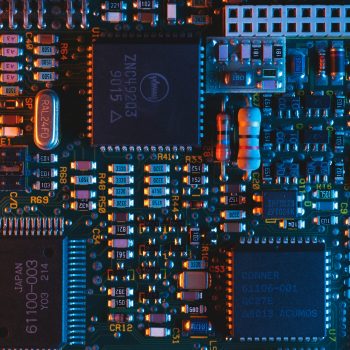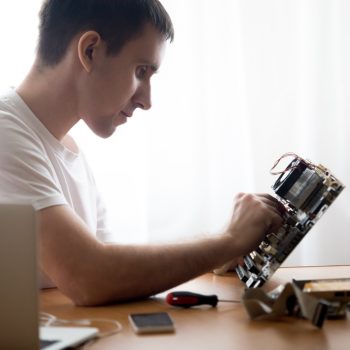
You and your team have decided to build an unrivaled Hardware and IoT startup. The idea is great, and everyone on your team is passionate about it. Soon after your pitch, you get a local investor or an angel who is ready to open his wallet for your hardware startup needs. You build and test a prototype with the help of industry-leading engineering simulation software obtained through the ANSYS Startup Program, and it works impeccably.So, you start mass production right away and your hardware and IoT startup becomes a phenomena of success.
Sounds just fine, right? Well, the reality is slightly more complicated, and every hardware and IoT startup builder encounters challenges like finding investors and taking charge of manufacturing and distribution. Since these issues are inevitable and prevalent in every hardware startup, it is important to take them into account and be prepared beforehand.
In this article we focus on the most common challenges.
Financial obstacles
Building a hardware and IoT startup is an expensive task, and the very first issue that engineers face is a lack of financial resources. Not only do hardware founders have to cover the expenses that a regular software startup would have, but they must also deal with extra costs for prototyping, inventory, manufacturing, and distribution. From the beginning, cold reality insists that builders have sufficient funds to nurture their startup; otherwise the development of the idea should be postponed. Lack of funds limit the ability to test the product and, consequently, can result in lower quality or even cessation of the project. Thus, it is necessary to dedicate more time raising enough investment at the initial stage and ensure that you have a decent sum in your back pocket that could serve in case of unpredicted expenditures (and there will always be some).
Building an initial prototype (MVP)
Getting a demo to show to potential investors and buyers is another major challenge. Hardware and IoT startups, unlike software startups, are building actual products, therefore an initial prototype is necessary to grasp potential investors’ and buyers’ attention. Thus, if in some cases, a software MVP costs $1,000, an MVP for a hardware startup would start from $5,000. For that, you have to prepare in advance since building an initial prototype is both time and money consuming, especially with the endless try-outs crucial for testing product operation in different conditions. As a way out of pricey leveraging, specific companies, such as ANSYS, are offering virtual simulation solutions (you can read more about the benefits of virtual prototyping here) at a discounted cost to eligible startups and early stage companies through their ANSYS Startup Program.
Investors
Since hardware startups require capital, investments are a great challenge. The majority of the investors, from angels to institutional investors, are rather reluctant when investing in hardware. One of the reasons is that hardware solutions are cash-intensive. They require constant financing for covering the cost of extra layers like prototyping, inventory, manufacturing, and distribution. Just like software solutions, investors would focus on the milestones achieved so far in the project. To demonstrate a product’s potential, such crowdfunding platforms as Kickstarter or Indiegogo are a way to go; they allow startup owners to take the best of both worlds: observe the customer’s needs and validate the product, while at the same time raising funds.
Manufacturing
When the challenge of a fully functioning prototype has been overcome, the manufacturing hurdle is next. When deciding where to manufacture your product, you have to deal with the cost, volume, intellectual property issues, and flexibility. Depending on the stage of your startup and the demand of your product, you can either stick to local manufacturers or look for partners at the national or international level. Keep in mind that neither under-demand, when you order more products than people buy, nor over-demand, when you order less products than people end up needing, is beneficial. At the moment of manufacturing, the success of your product is in the hands of the manufacturer. Thus, it is vital to choose a competent partner who meets deadlines. Do not go for the first to show, always talk to numerous candidates to choose the one who can meet high quality and scheduling expectations.
Inventory and distribution
Inventory storage and product distribution are challenging. When a product is manufactured, you have to think of where to store all the units and how to distribute them to the customers. Finding a warehouse in a specific location that would be suitable for storing your particular product and would not cost a fortune might be a headache, especially if you have not considered such a need at the beginning. Startups should always think beforehand on the storage of their products, as well as designing them in such a way that their assembly, shipping, and delivery is as easy as possible. The process of distribution development is tough to manage. Unlike software products that clients can receive within seconds, hardware’s physical assets require transportation that can be high in cost and time-consuming. For that, you might want to check on numerous delivery companies and their terms and conditions before choosing the one to partner with.
Safety
For hardware and IoT startups, safety is crucial. Most hardware products are used in rule-sensitive sectors, like fintech, medtech, and healthtech, where safety is the highest priority. The moment a physical unit reaches the customer, it has to be flawless from the first round. Poor functioning products can negatively affect the reputation of the startup, and in the worst case scenario can cause physical damage to the user. Despite the fact that the end user is the one who truly matters, safety regulations should not be limited to the end product; safe manufacturing processes have to be kept in mind as well. Sometimes safety regulations and requirements can differ from country to country; thus, if you are planning to build a startup that will sell in international markets, it is always advisable to dedicate some time to scrutinizing specific regulations that the market you are targeting requires.
We have also discussed some of the biggest mistakes that hardware startups should avoid in our previous article. Make sure to check it out and save your startup from making one.
After knowing the challenges that most hardware and IoT startups face, it might seem that the road to success for startups is quite off-putting and discouraging. Nevertheless, every coin has two sides; just like in hardware startups there are challenges; there are opportunities too. Wonder what are those? Stay tuned and read all about them in our blog in the future!


